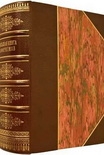Mr. Monk Goes to Germany, Lee Goldberg [i have read the book TXT] 📗

- Author: Lee Goldberg
Book online «Mr. Monk Goes to Germany, Lee Goldberg [i have read the book TXT] 📗». Author Lee Goldberg
“It’s a big river,” she said, “with a strong current.”
Monk gave me a grim look. “This entire town is a toxic waste dump. It should be evacuated immediately and quarantined for public safety.”
“People haven’t used the streets to dump their waste in over a hundred years,” I said. “It’s clean now.”
“Radiation has a half-life of centuries,” Monk said, stepping carefully from stone to stone.
“Human waste isn’t radioactive,” I said.
“Nobody thought atoms were until they started splitting them,” Monk said.
“That doesn’t make any sense,” I said.
“It makes perfect sense,” Monk said. “It explains why this place produced so many dwarfs, why Sneezy was Sneezy, and why people thought writing half of an eight was the same as a four.”
On some subjects it was pointless to argue with Monk becausethere was no chance of changing his mind. This was one of those subjects.
“The town square is coming up,” Friderike said. “Between 1626 and 1629, over a hundred women were accused of being witches. They were tortured until they confessed and then burned at the stake in the middle of the square.”
“And I can guess why,” Monk said. “The poor women probably committed the heresy of suggesting that maybe it wasn’t such a good idea to have sewage running down the streets because it could make people very sick, physically and mentally. What was I thinking, coming here?”
“We could go home right now,” I said. “If you don’t mind missing your next two appointments with Dr. Kroger.”
Monk grimaced. “Life is cruel.”
The town square was crowded with people wandering amid the tents, tables, and catering trucks selling fruit, vegetables, meat, seafood, and household knickknacks.
There were also jugglers, musicians, glassblowers, painters, and sculptors plying their art and trade among the vendors, giving the market an Old World, party atmosphere that reminded me of the Renaissance fair that used to come to Monterey each summer when I was growing up.
Unlike the fair, though, this was authentic.
We soon lost track of Friderike. She stopped to shop and we got caught up in the flow of the crowd. I let myself be carried along, but Monk fought the current and ended up looking like one of the street performers.
He leapt, and pirouetted, and ducked to avoid physical contact with strangers and to keep his balance on his selected cobblestones. There were small children who actually stopped to watch him. I did my best to ignore him, preferring to let my gaze wander over the butchers and bakers, painters and puppeteers.
I was browsing through a vendor’s selection of handmade stuffed animals when, out of the corner of my eye, I saw an extraordinary thing.
Monk stopped his strange dance and began to run into the crowd, pushing through the people.
Something was very wrong. I immediately ran after him.
“Mr. Monk!” I yelled. “Wait!”
But he charged ahead, oblivious to the people he was rudely elbowing and shoving aside.
Monk was so determined in his pursuit that he didn’t seem to care at all whether he ran over uneven cobblestones or stepped in the drain.
Whatever had caught his attention was of such great importance that it neutralized his fears and anxieties. I couldn’t imagine what he had seen that could have such power over him.
And then he came to such an abrupt, complete stop that I nearly plowed right into his back.
“What is it?” I said, trying to catch my breath. “What’s wrong?”
Monk had reached an intersection of several narrow streets and was looking up and down each one of them, his head practically spinning.
I was getting dizzy just looking at him. Or perhaps it was the sudden exertion combined with jet lag.
“What did you see?” I asked. “What were you running after?”
“He’s gone,” Monk said, the expression on his face tight and forlorn. “I lost him.”
“Who?”
Monk took a deep breath and closed his eyes. And when he opened them again there was a steely expression of determination on his face that I’d never seen before.
“The man who killed my wife,” he said.
CHAPTER FOURTEEN
Mr. Monk and the Six Fingers
Monk went up one street and down another, looking in every alley, courtyard, and alcove. He was chasing a phantom and I was hurrying to keep up with him.
“How do you know it was him?” I said.
“I know what I saw,” Monk said.
“Which was what, exactly?”
“I saw a man in the crowd buying a pastry,” Monk said. “He had six fingers on his right hand.”
“Are you sure?”
“It’s not something you see every day,” Monk said. “The man who killed Trudy is here and I let him get away.”
I knew only the general details about Trudy’s murder. She was a reporter for a small local paper and she was killed by a car bomb that was remotely activated by a cell phone.
Monk suspected that Dale Biederback, a ruthless eight-hundred-pound egomaniac known as Dale the Whale, had something to do with her murder. Trudy had written several unflattering stories about Dale, who hadn’t left his bed in a decade and owned half the real estate in San Francisco.
Dale nearly sued the Monks into poverty before settling, dropping his lawsuit in exchange for their summer home, which he then used to store his extensive porn collection. Obviously he did that just to irritate the Monks even more.
Monk could never prove Dale the Whale’s connection to Trudy’s murder, but he did put the morbidly obese monster in prison for hiring someone to kill a local judge.
Even so, it





Comments (0)